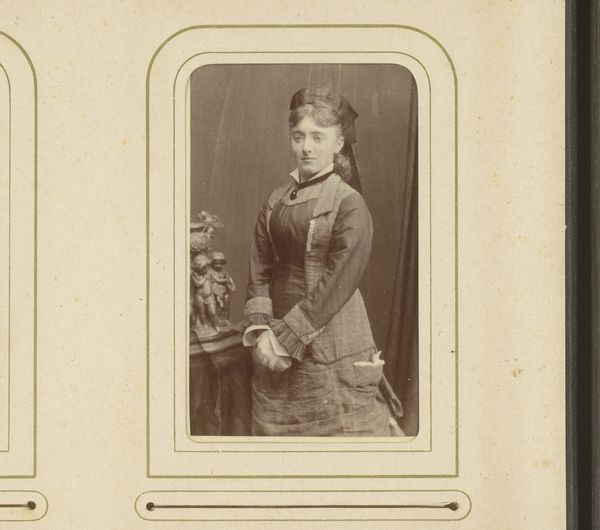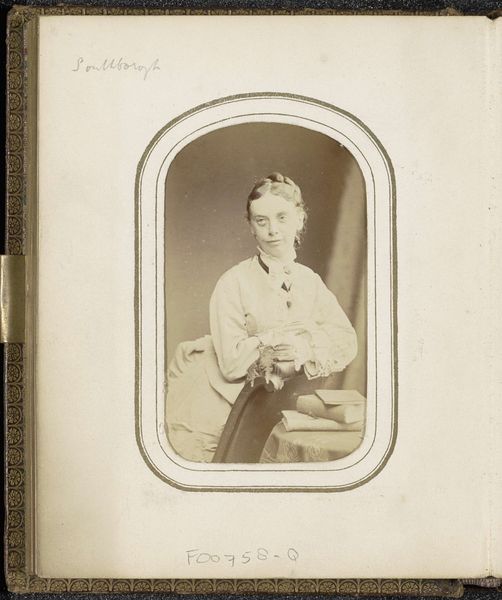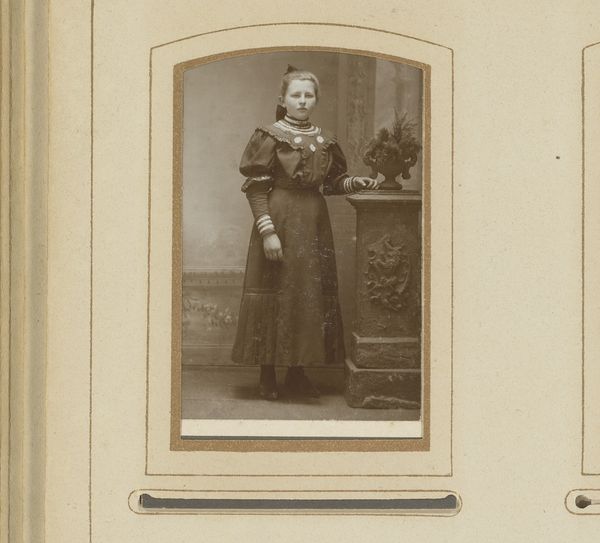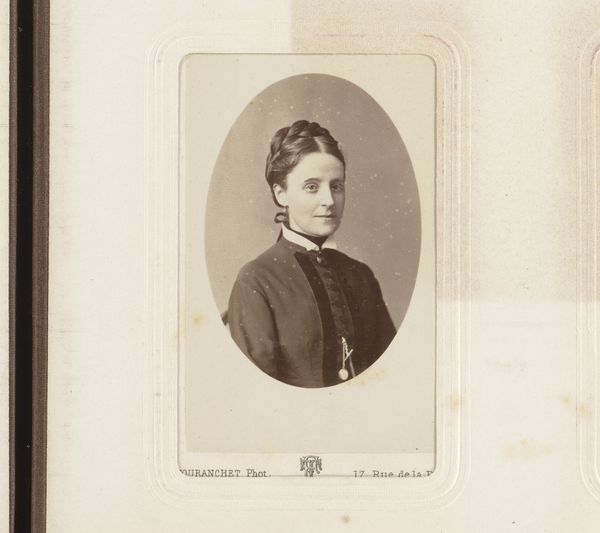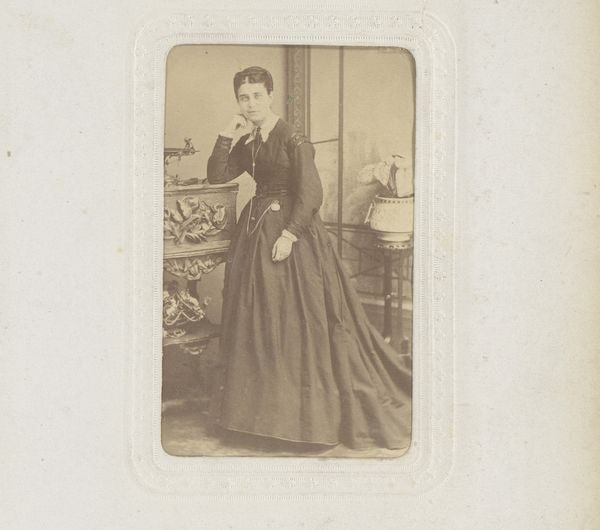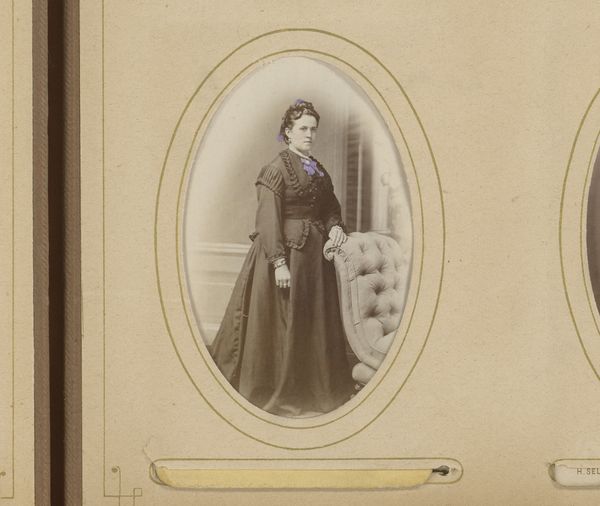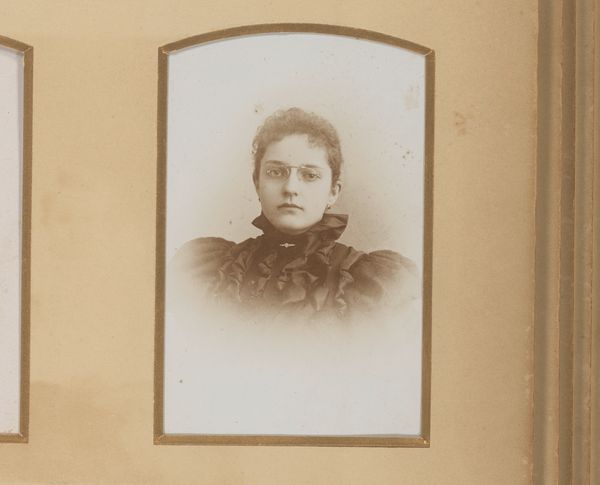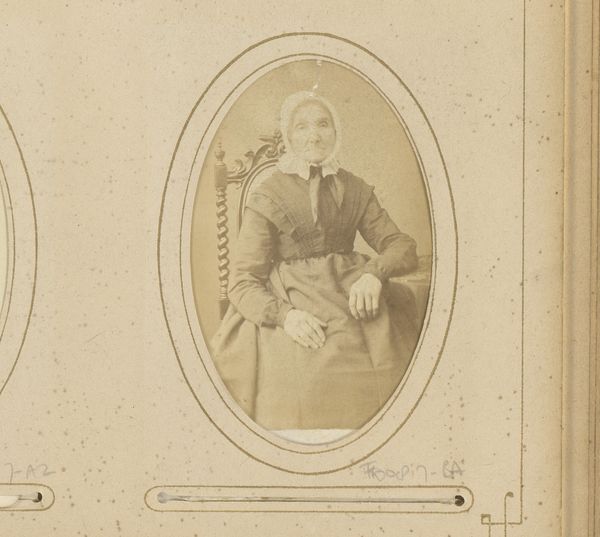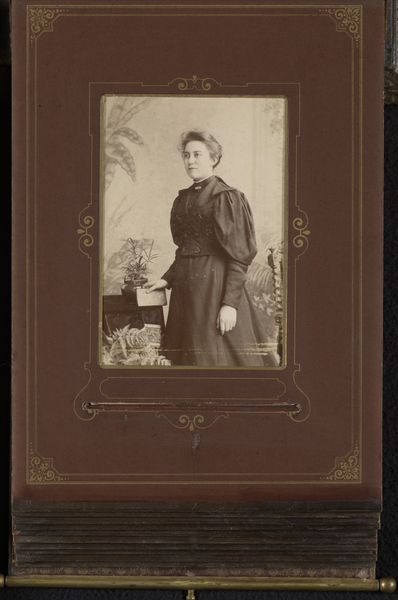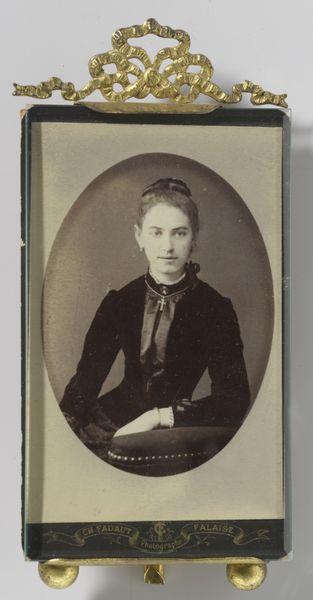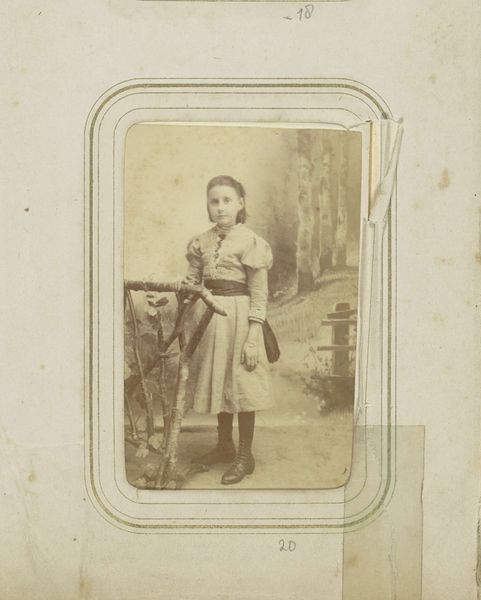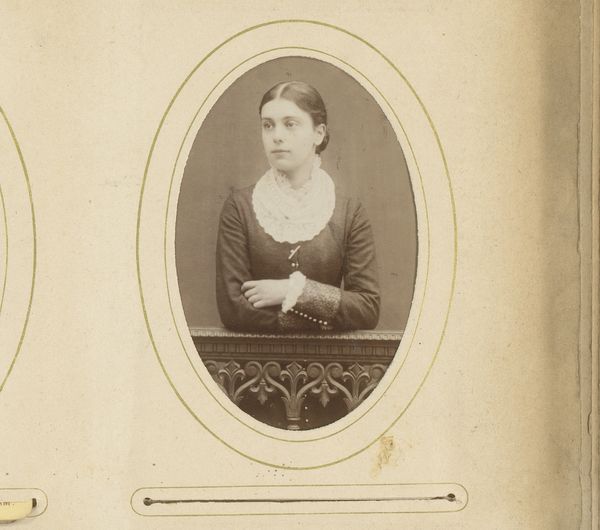
photography
#
portrait
#
photography
#
historical photography
#
realism
Dimensions: height 82 mm, width 50 mm
Copyright: Rijks Museum: Open Domain
Editor: Here we have Edmund Risse's "Portrait of a Young Woman Standing by a Chair," taken sometime between 1880 and 1891. It's a beautiful photograph, quite formal but also with an air of delicate restraint. What sort of stories or deeper meanings do you find reflected in an image like this? Curator: The power of images resides not just in what is shown, but what is implied. Think of the chair, strategically placed; is it a prop, or a symbol? How does its presence shape our understanding of the woman? It evokes the trappings of domesticity and status, doesn’t it? Consider the recurring motif of restraint—her posture, the muted tones, even the tightly bound lace at her neck. Do you find that her garments speak to a broader historical context? Editor: Definitely, that controlled elegance feels very late Victorian. The details in her attire and the subdued palette are evocative. Is it possible to know much more about her class and perhaps cultural standing from these kinds of cues? Curator: Absolutely. Objects like the small, ornate bag she carries function almost as hieroglyphs, conveying unspoken messages about social standing. Even the careful framing of the photograph itself plays a part. These visual clues work together, embedding psychological and societal cues within the image. Doesn't that make you curious about what details later viewers might find less obviously meaningful? Editor: That’s such an interesting point about details changing their significance over time. I hadn't thought about the framing as another element of "dress" in that sense. Curator: Precisely. Every detail holds potential significance, a cultural echo waiting to be deciphered. Editor: I'll certainly pay closer attention to the visual language embedded in portraiture from now on! Thanks so much for sharing your insights.
Comments
No comments
Be the first to comment and join the conversation on the ultimate creative platform.
